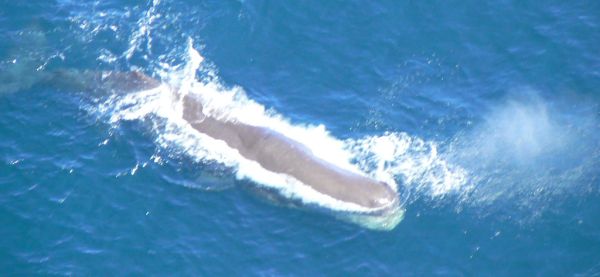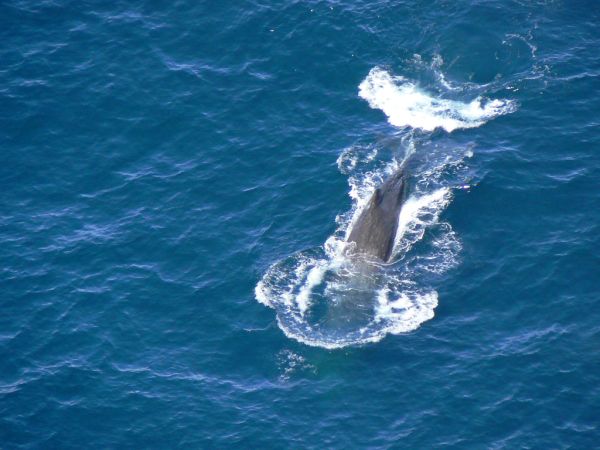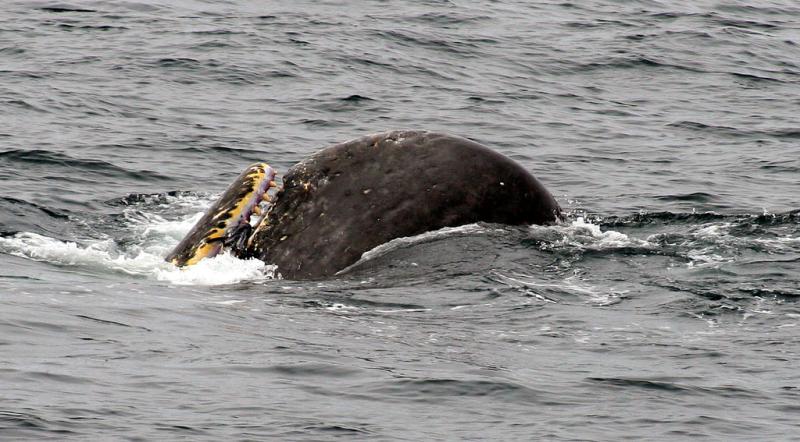Wildlife North America . com North American Animals - mamals, birds, reptiles, insects |
Sperm Whale (Physeter catodon)
Sperm Whale Photograph by cianc. Some rights reserved. (view image details) 
Sperm Whale Photograph by cianc. Some rights reserved. (view image details) 
Sperm Whale surface feeding - Kaikoura, New Zealand. Photograph by Richard Giddins. Some rights reserved. (view image details)
SPERM WHALE FACTS
DescriptionThe Sperm Whale is a toothed whale with a huge box-shaped head. The head is about a third of the total body length, and contains the largest brain of any mammal - the brain weighs in at about 9kg. Sperm Whales can dive to extraordinary depths of up to 3km below the surface and can remain underwater for over 2 hours. The body is long and log-shaped with wrinkled dark grey-brown skin. There is usually some white or pale grey markings around the mouth and on the underside around the anal area. There is no dorsal fin - just a fin-shaped hump and a series of ridges well down the back. The blowhole is on the left side of the head instead of the middle. Sperm Whales have 18-28 teeth on each side of the lower jaws, and a few small weak teeth on the upper jaw. Size Length: males grow up to 19m; females up to 12 mm. Weight: 35,000kg - 50,000kg Environment Sperm whales usually inhabit deep waters over 1000m deep where there are plenty squid for food. Food squid (including giant squid), octopus, fish. It also eats some sharks and skates. Breeding A single calf is born after a gestation period of about 15 months. The calf is about 4 m at birth and weighs about 1000kg. Range Sperm whales are found in all the open oceans of the world. They are most common in temperate and tropical latitudes, but rarely found in polar arctic or Antarctic waters. Classification
Home | Mammals | Reptiles | Birds | Insects | Privacy Policy | Disclaimer | Contact Us |